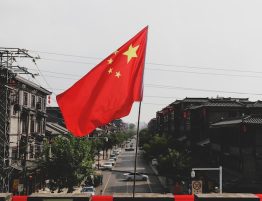
In China, the closure of a company requires a quite complex procedure both in terms of time and costs to such an extent that nowadays it represents one of the major impediments for some foreign investors who start an investment in the country.
For this reason, since 2017, the Chinese government has been carrying out a number of regulatory measures with the scope of simplifying the procedure, showing this intention firstly in the “Notice on Facilitation of Business Cancellation” (市场监管总局 人力资源社会保障部商务部 海关总署 税务总局关于推进企业注销便利化工作的通知) of 2019, and, more recently, in the “Circular on Further Improving Simplified Deregistration to Facilitate the Withdrawal of Micro, Small and Medium-Sized Enterprises from the Market” – SAMR Circular 45/2021市场监管总局国家税务总局关于进一步完善简易注销登记便捷中小微企业市场退出的通知 – published on August 3rd by the State Administration for Market Regulation (SAMR) with the aim of optimizing the business environment and stimulating market vitality.
The intervention of the legislator provides for a simplified procedure applicable to a number of specific cases that allows the reduction of both the formalities required to the company and the subjects involved in the liquidation process, with a consequent savings in time and costs.
Pursuant to Art. 1 of the Circular, the simplified procedure applies to “all commercial operators who have not pending rights and debts towards their creditors” (including employees’ wages, statutory compensation, social insurance, taxes, etc.), broadening the scope of application compared to what provided for previously and removing the application limits in relation to the legal form of the company except for the companies limited by shares listed within the negative list for foreign investments.
Further cases in which the simplified procedure is not applicable involve:
- Enterprises who are involved in abnormal operations or have committed serious violations;
- Enterprises whose equity or assets are pledged or mortgaged;
- Enterprises subject to investigation, compulsory administrative measures, judicial assistance or administrative punishment;
- Enterprises that require a previous approval in accordance with laws, regulations or decisions by the State Council
However, the Circular provides for the so called “fault-tolerant mechanism” that regulates those cases in which the competent authorities have detected the above mentioned anomalies subsequently the submission of the announcement. In these cases, it is not necessary to revoke the announcement, rather it will be sufficient to re-submit it as soon as the anomalies have disappeared.
The de-registration of the company from the Registry of Companies shall be made through a digital platform (一网,literally “one network”). Once entered the dedicated section on the platform, the applicant shall proceed with the “de-registration announcement” that will be published through the National Enterprise Credit Information Publicity System. The announcement will be subject to a period of 20 days (instead of 45 days provided for the general de-registration procedure in case of announcement on the newspaper) during which the SAMR will share all necessary information directly with other authorities involved in the liquidation procedure (taxes, HR, social insurance) that are required to raise objections within the time allowed.
With regard to tax aspects, it should be noted that this procedure can be applied only if:
- Enterprise has never handled tax-related matters with tax bureau;
- Enterprise, even registered at the Tax Office, has never issued or registered any invoice;
- Enterprise has already completed the tax de-registration
In case of any objection is raised by the involved authorities or by the SAMR, the applicant can proceed with the electronic submission of the following documents in order to complete the de-registration procedure:
- Application letter for de-registration;
- The Commitment Letter of all investors declaring the existence of the requirements for the simplified procedure;
- Power of attorney;
- The original and duplicate copy of the Business License
From this general analysis, it is clear that, compared to the general de-registration procedure, the simplified one provides for a process – except for the tax requirements – quite facilitated but, applicable to those companies that actually are in situations of inactivity.
The Commitment Letter, signed by all investors, which declares the existence of the conditions necessary to have access to the simplified procedure, substitutes the liquidation report (drafted by the liquidation committee during the general procedure) by largely relying on the “good faith” of the applicant, whose eventual false statements could be subject to administrative and criminal penalties.
China Desk – Studio Legale Zunarelli








